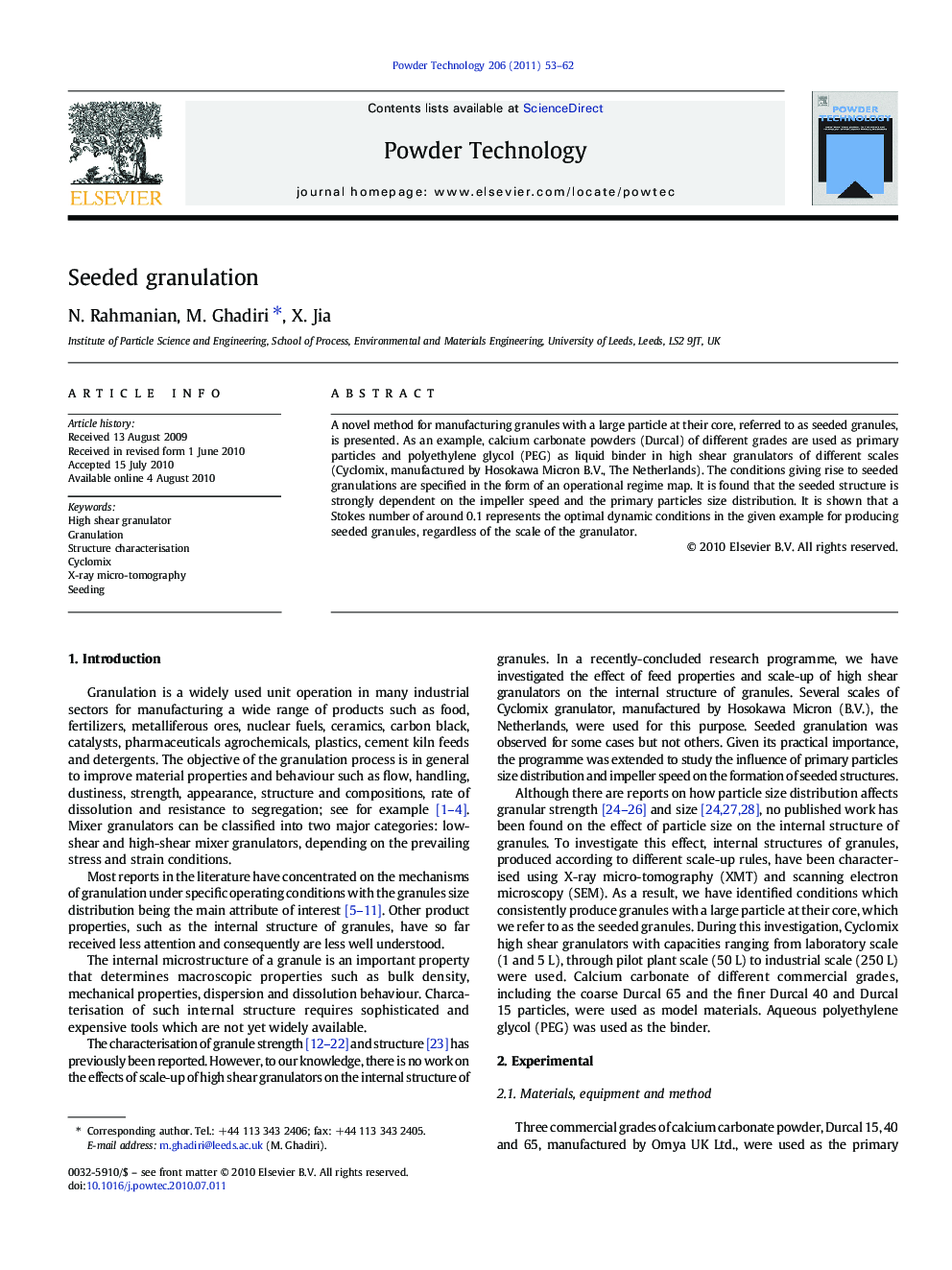| Article ID | Journal | Published Year | Pages | File Type |
|---|---|---|---|---|
| 238077 | Powder Technology | 2011 | 10 Pages |
A novel method for manufacturing granules with a large particle at their core, referred to as seeded granules, is presented. As an example, calcium carbonate powders (Durcal) of different grades are used as primary particles and polyethylene glycol (PEG) as liquid binder in high shear granulators of different scales (Cyclomix, manufactured by Hosokawa Micron B.V., The Netherlands). The conditions giving rise to seeded granulations are specified in the form of an operational regime map. It is found that the seeded structure is strongly dependent on the impeller speed and the primary particles size distribution. It is shown that a Stokes number of around 0.1 represents the optimal dynamic conditions in the given example for producing seeded granules, regardless of the scale of the granulator.
Graphical AbstractA novel method for manufacturing granules with a large particle at their core, referred to as seeded granules, is presented. The conditions giving rise to seeded granulations are specified in the form of an operational regime map. It is found that the seeded structure is heavily dependent on the impeller speed and the primary particles size distribution. It is shown that Stokes number of around 0.1 represents the optimal dynamic conditions, in the given example, for producing seeded granules, regardless of the scale of the granulator.Figure optionsDownload full-size imageDownload as PowerPoint slide(a) Central cross-sections of a granule produced under the constant tip speed in the 5 L granulator: resolution 0.87 μm/pixel. (b) SEM image of central cross-section of granule shows seeded granules.
